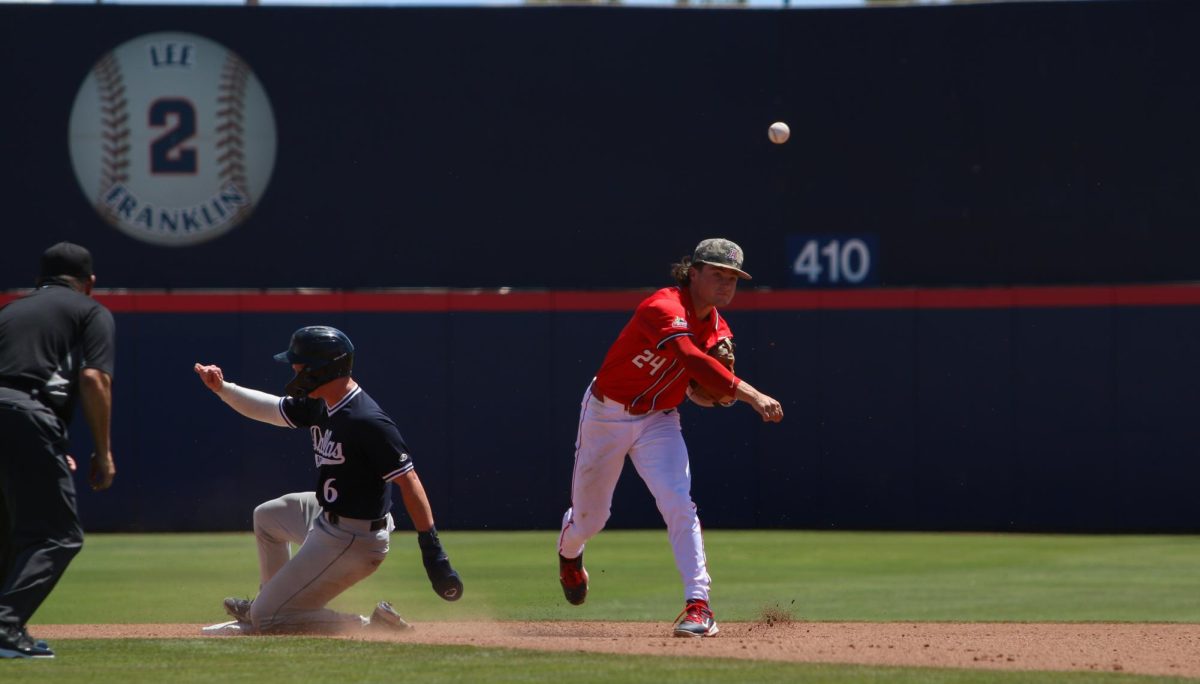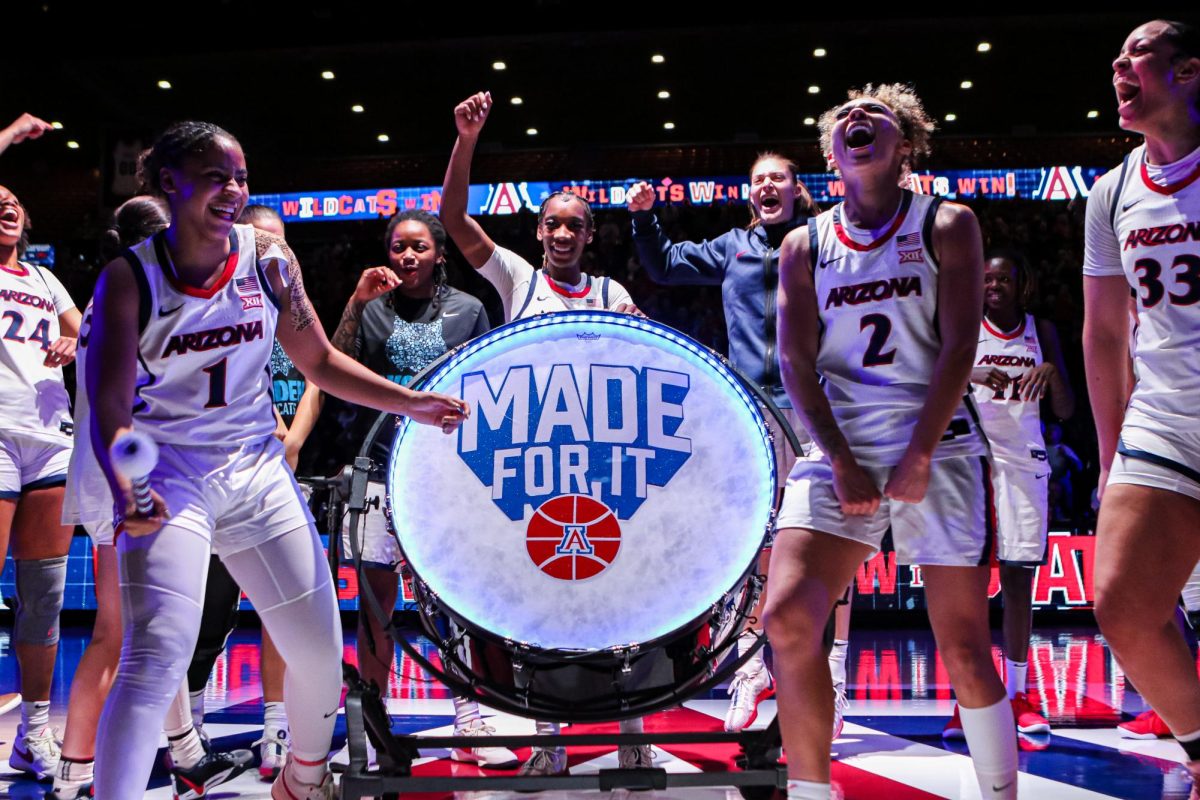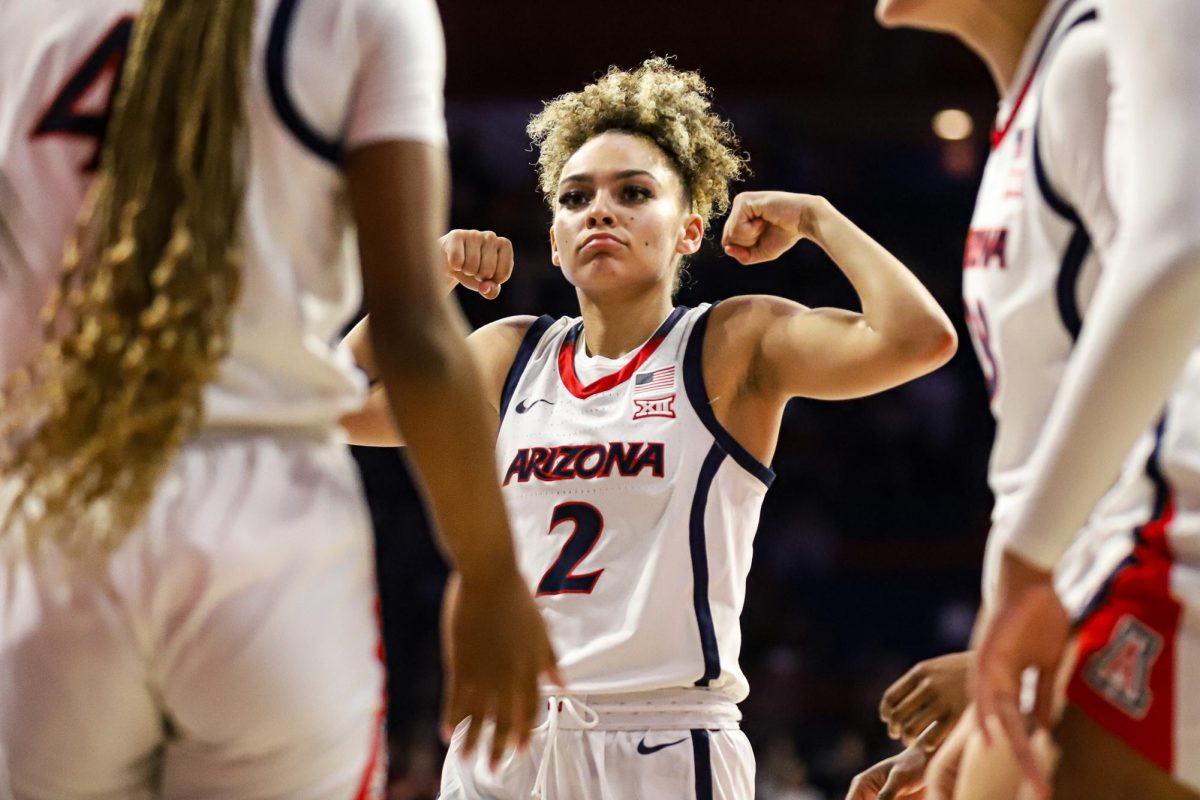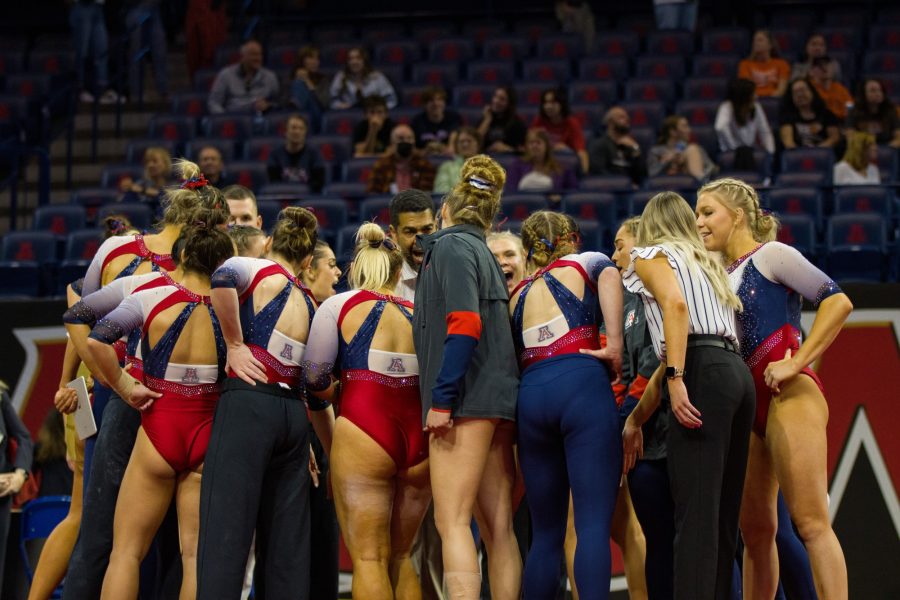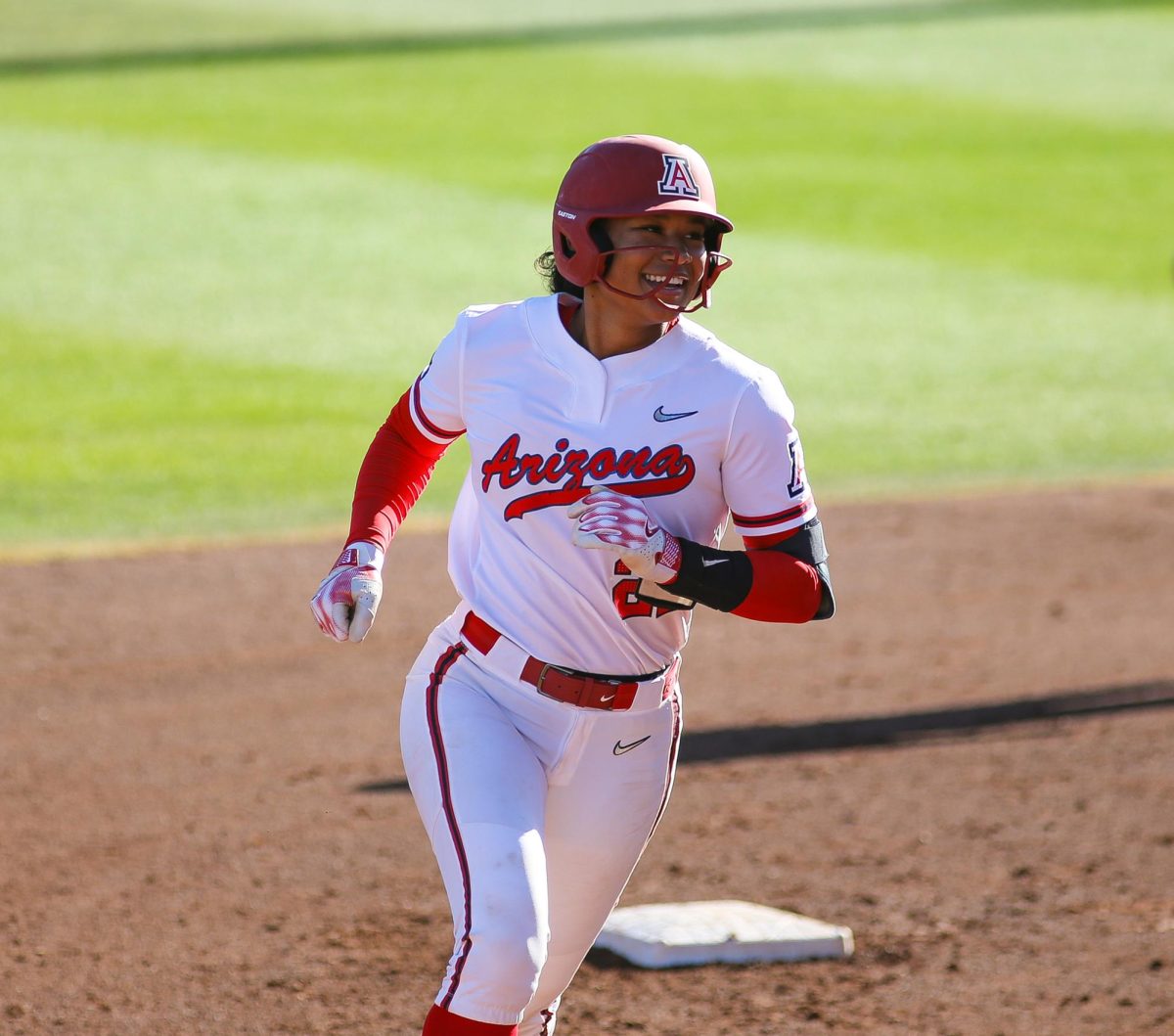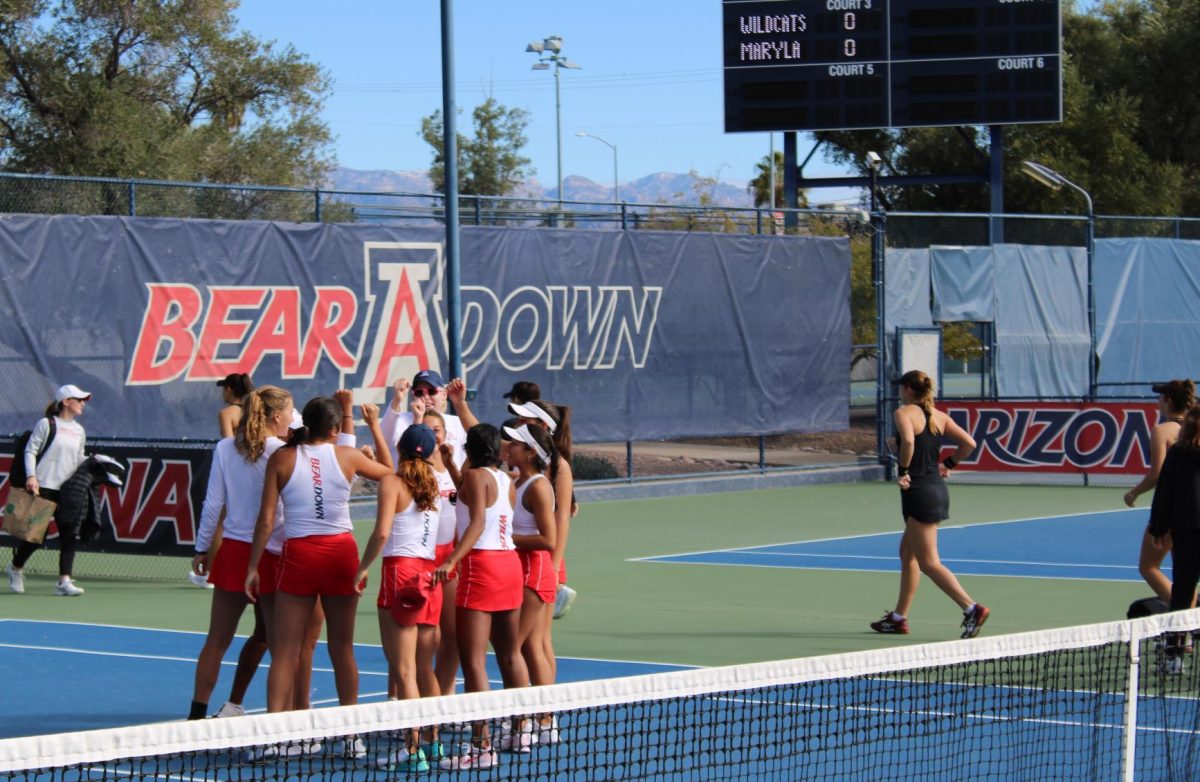The Arizona women’s basketball team has reached its tipping point.
If the Wildcats don’t turn things around immediately, its chances of salvaging a once promising season will evaporate. It will be over. A thought that didn’t even cross the mind one month ago, when Arizona surprised the UCLA Bruins in a 74-66 win.
It’s been well documented how Arizona started off with a ten-year best record of 11-1. Since that point, they are just 2-9, capped off by the most recent blowout loss to Stanford in which they were defeated by 40 points. In those nine losses, five were by 10 or more points.
The losing streak, which has now reached six games, has the Wildcats alone in last place in the Pac-12 with a 2-9 record. Arizona has tried sticking with the same formula that won those first 10 games. Run, shoot threes, and give the ball to Davellyn Whyte. That formula, at its best, is what helped the Wildcats overcome turnover and rebounding issues in its first 12 games and get those 11 victories. Then, that formula stopped producing its desired result.
In their last five games, the Wildcats have shot just 27 percent from beyond the arc and have averaged just above four fast break points per game.
Whyte has had the worst stretch of basketball of her career, bottoming out with zero points in 14 minutes of action — without injury — against Stanford. Head coach Niya Butts needs to make a change, and what she needs to do is hidden in plain sight — play the freshmen.
Aley Rohde has taken a while, but she’s finally starting to come into her own. She has been in the starting lineup all season, but recently she has proven ready for plays to start running through her. In her last three games, she has averaged 12.7 points, nine rebounds and one block per game. In most games, the 6-foot-5 Cave Creek, Ariz., native is the tallest player on the floor.
Erin Butler is the team’s best 3-point shooter. On the season, she’s shot 44 percent from long range. When given the playing time and the ball, she has proven capable of going on a hot streak and becoming the outside scoring threat this team needs, as evidenced by her 23-point outburst against Oregon.
Then there is Layana White. On the statsheet, her contributions aren’t as noticeable. She only averages 1.8 points and 0.9 rebounds in 6.5 minutes per game. But, as Butts herself pointed out, you can never accuse White of not giving her best effort at all times. Against Stanford, White didn’t enter the game until the second half when there was 9:32 left on the clock and the score was 78-36 in the Cardinal’s favor. In that nine-minute time span, White recorded nine points on 4-of-6 shooting and two steals.
“She plays all out, doesn’t matter what the situation is. I know that I’m going to get everything she has,” Butts said about White. “That’s one kid that’s going to play all out.”
On a team where effort and focus have been seemingly hard to come by, why isn’t the hardest-working player getting more playing time?
The Wildcats are on the struggle bus right now and Whyte is in the driver’s seat. If Arizona wants to salvage its season, and maybe even build some momentum for the Pac-12 tournament, these freshmen need playing time.
In all likelihood — unless Arizona can pull off an unprecedented seven-game winning streak to close out the season — an at-large NCAA tournament bid is out of reach. But if they can win four or five out of the seven games, maybe that will be all the momentum this team needs to make a run through the Pac-12 tournament.
The talent is there, it’s about time the team started using it.
— Zack Rosenblatt is the assistant sports editor. He can be reached at sports@wildcat.arizona.edu or on Twitter via @WildcatSports.



